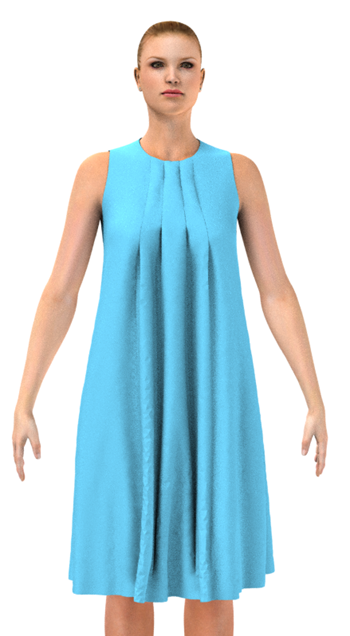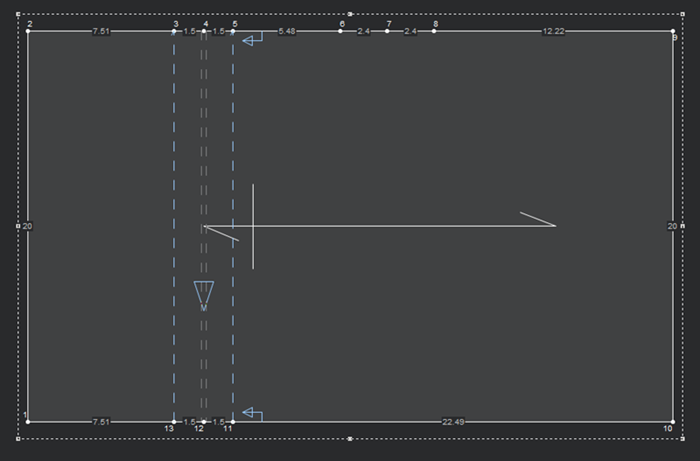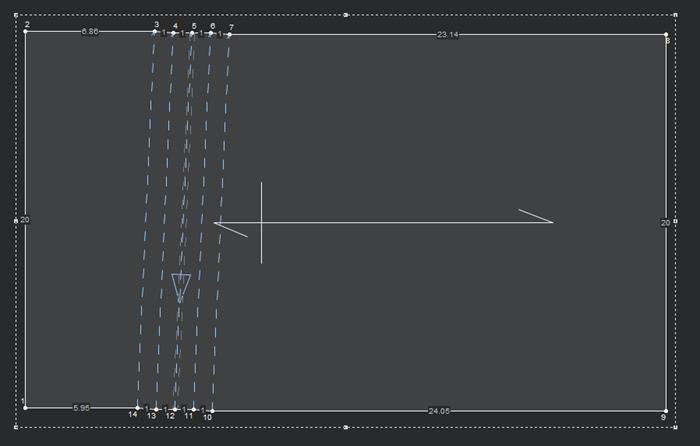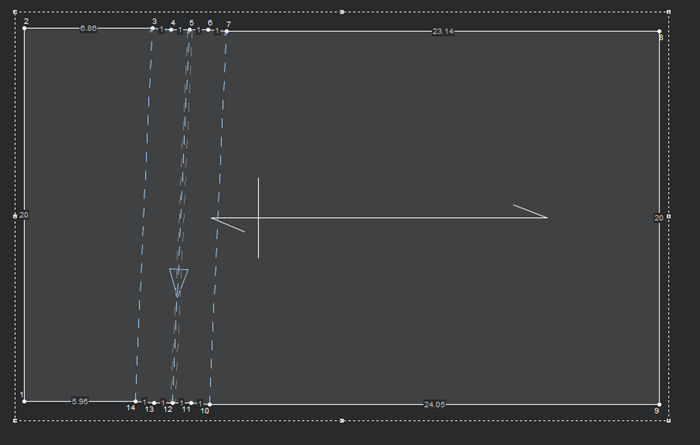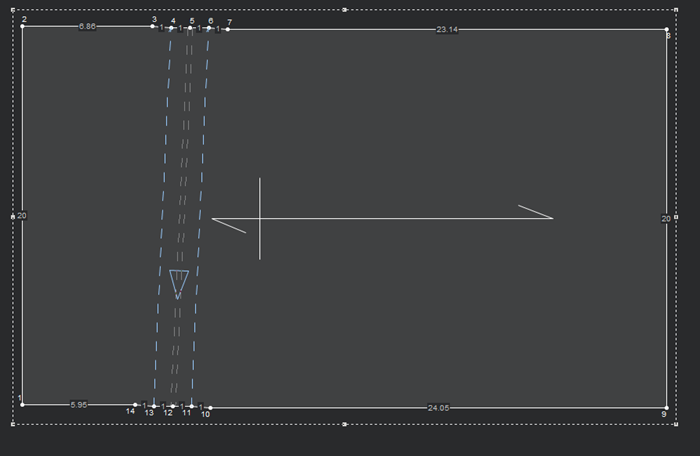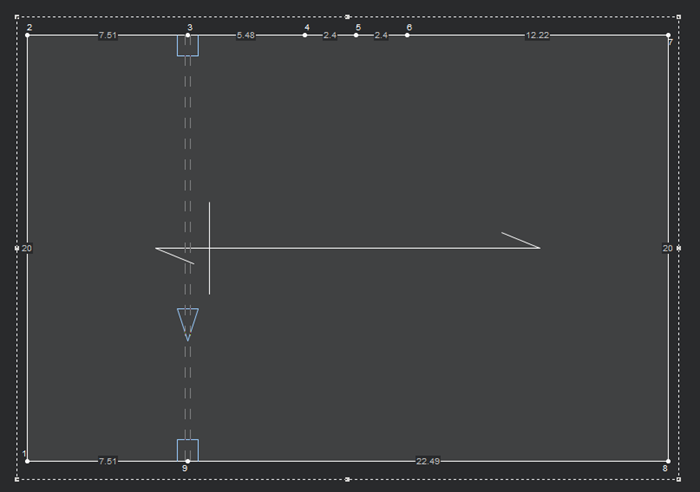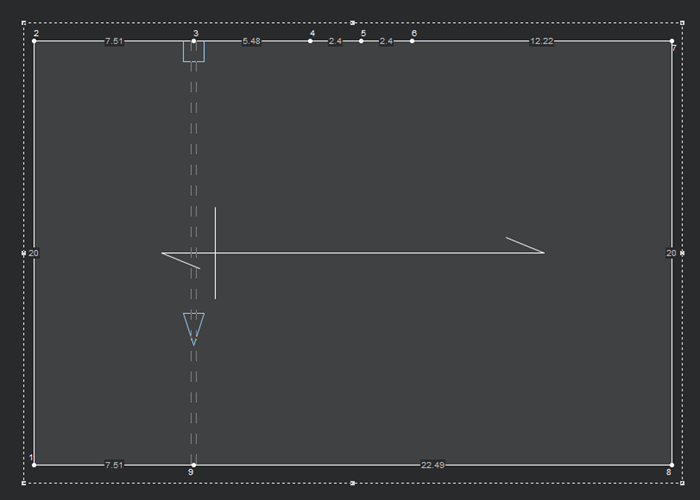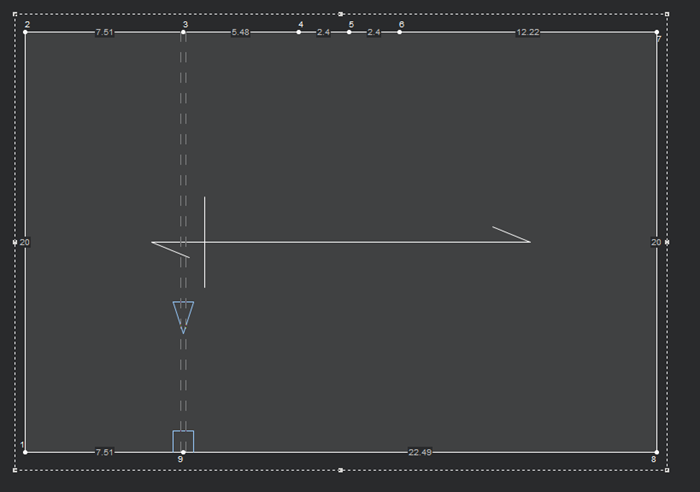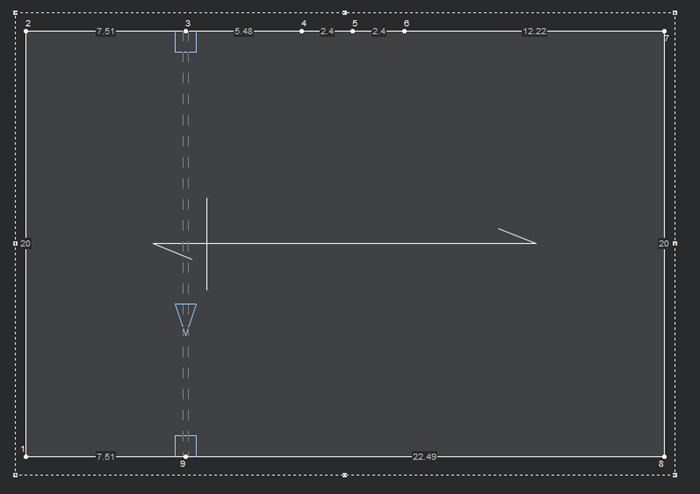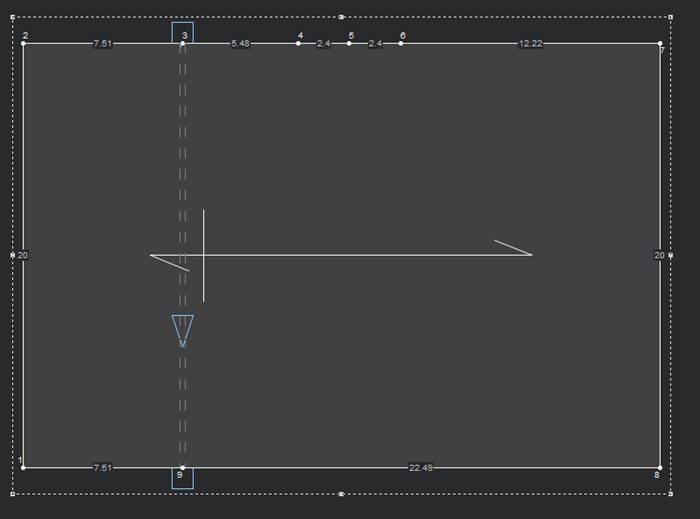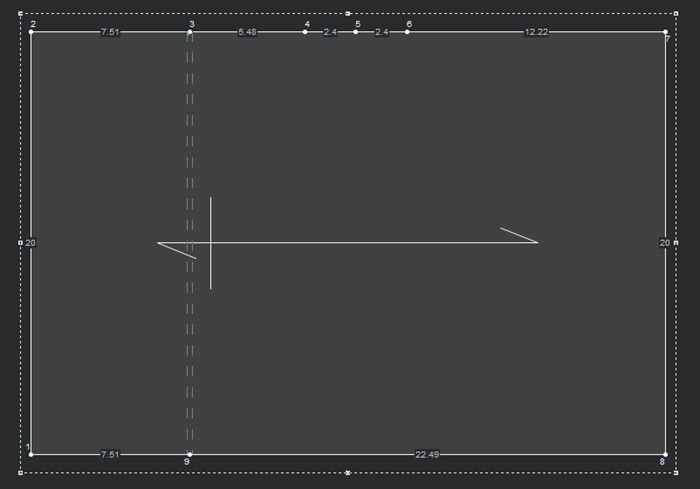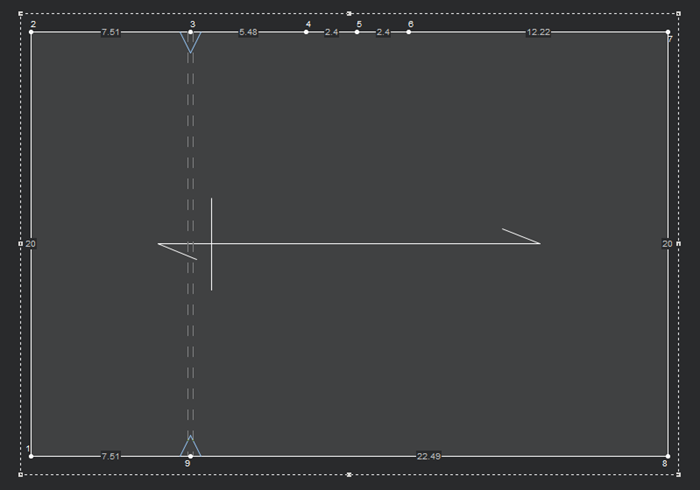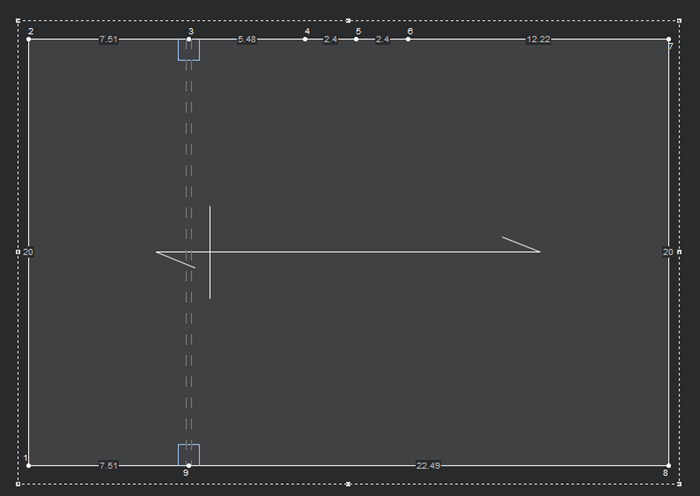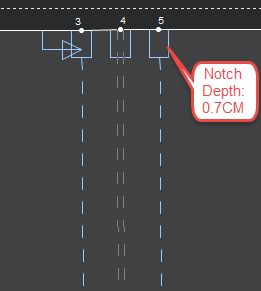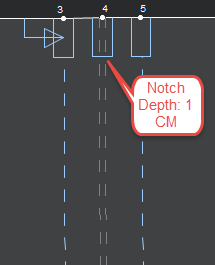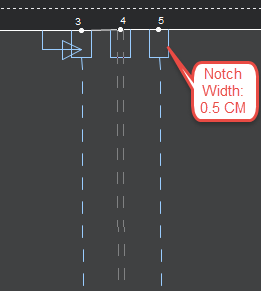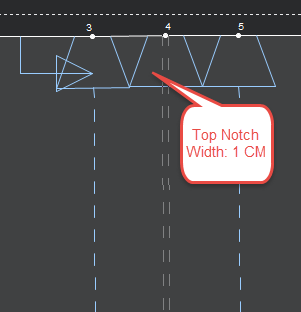Creating and Defining Pleats
If you have created a pleat in 2D you can adjust its properties in 3D to make sure it simulates correctly without any collisions and without having to cut the pattern to achieve the pleat. For more information about creating pleats in 2D, see Creating Pleats
![]() Pleat Parts
(click to view the different parts of a pleat)
Pleat Parts
(click to view the different parts of a pleat)
Note: Starting from version 15.6SP3 and later you can no longer define folding on pleats.
To create and define pleats in 3D:
-
Open up your PDS file.
In this example we previously created a pleated dress:
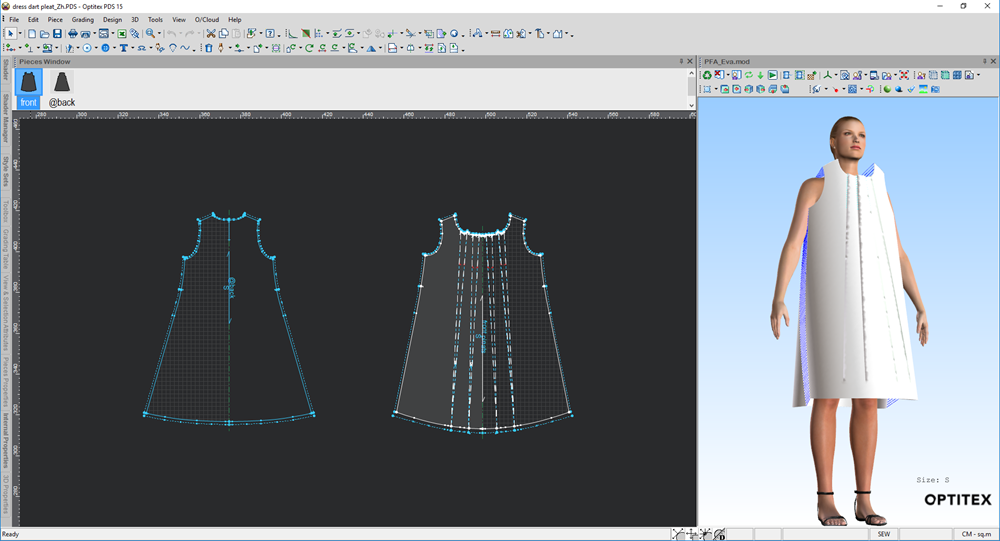
-
To add another pleat, from the toolbar click
 ,
or press "L" on your keyboard.
,
or press "L" on your keyboard. -
Select the starting point of the pleat and click with your mouse, then drag your mouse to the ending point of the pleat and click as follows:
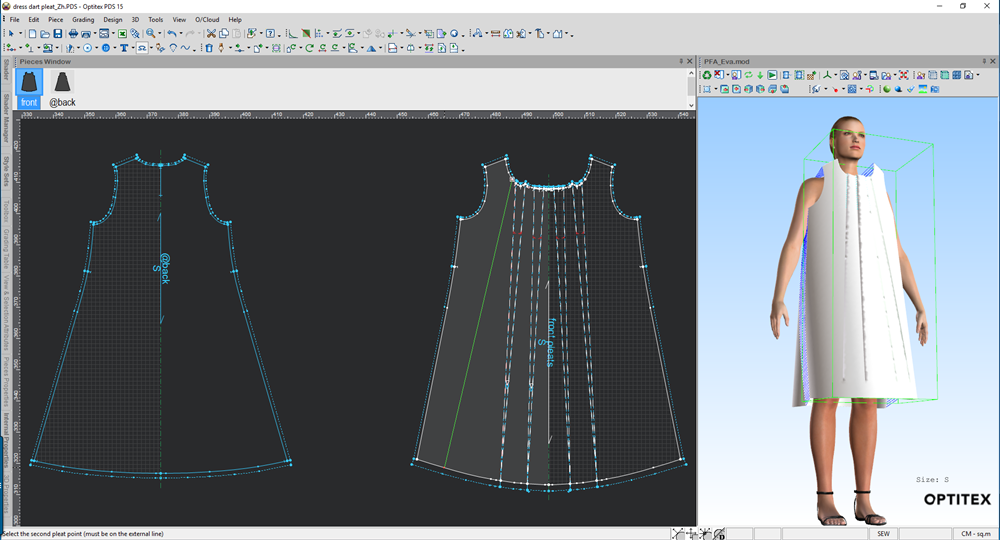
Once the pleat is created, the Pleat Properties dialog displays :
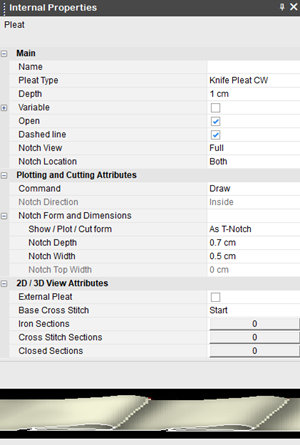
-
Enter the main details of the pleat as follows:
|
Field |
Description |
|
Main |
|
|
Name |
Enter a name for the pleat. |
|
Pleat Type |
From the drop-down list, select the pleat type: Axe: A line that has no depth and cannot be opened.
Knife Pleat CW: One neighbor line is placed on the other neighbor line in clockwise direction (relatively to the pleat start point).
Knife Pleat CCW: One neighbor line is placed on the other neighbor line in counter clockwise direction (relatively to the pleat start point).
Box Pleat: Made by a CCW knife pleat and a CW knife pleat.
|
|
Depth |
The width of the fabric between the Pleat Line and the Neighbor Line (when the pleat is closed, the total width of additional fabric will be twice the depth). |
|
Variable |
Sets the pleat as a variable pleat with different depths from start and end points. |
|
Variable Depth |
If Variable is selected, this options sets the depth of the last point of the variable pleat. |
|
Open |
If selected, indicates the pleat is open, not closed. |
|
Dashed Line |
Sets the pleat with a dashed line. |
|
Notch View |
From the drop-down list, select one of the following: This field is dynamic according to the type of pleat. Knife Pleat CW/CCW Full
Knife Pleat CW/CCW Side
Knife Pleat CW/CCW Center
Axe Pleat Full (this is the only view for Axe pleats)
Box Pleat Full
Box Pleat Side
Box Pleat Center
|
|
Notch Location |
Defines the location of the notch. Both: The notch appears at the top and the bottom of the pleat
Start: The notch appears at the top of the pleat
End: The notch appears at the bottom of the pleat
|
-
If you are creating multiple pleats, define the attributes in the Multiple Pleats section:
|
Field |
Description |
|
Number of Pleats |
Enter the number of pleats you require. |
|
Distance |
Enter the distance you want between each pleat. |
|
Variable Distance |
Sets the pleat as a variable pleat with different distances between the multiple pleats. |
|
Distribution Direction |
Sets the direction of the pleat. |
-
If you are defining plotter/cutter attributes, define them in the Plotting and Cutting Attributes section.
|
Field |
Description |
|
Command |
Sets the command of the axis for the cutter. |
|
Notch Direction |
Sets the direction of the pleat, inside or outside the cloth. This field is dynamic according to the pleat type. The following example was created on a Box Pleat. Note: This field is only enabled for V notches. If you are using an I or T notch, this field will be disabled. Inside
Outside
|
|
Notch Form and Dimensions |
Note: By default, the dimensions are according to how you defined the notch dimensions in the Preferences; however you can change the dimensions using these parameters (this overrides the default preferences). |
|
Show/Plot/Cut form |
Sets the type of notch: This field is dynamic according to the pleat type. The following examples were created on Axe Pleats I Notch
V Notch
Note: The V notch will be part of the contour when plotting/cutting. T Notch
Box Notch
Note: The Box notch will be part of the contour when plotting/cutting. |
|
Notch Depth |
Sets the notch depth. Example: Box-Notch Depth (0.5CM)
Example: Box-Notch Depth (1 CM)
This changes according to the notch form type. |
|
Notch Width |
Sets the notch width. Example: Box-Notch Width (0.5CM)
Example: Box-Notch Width (1 CM)
This changes according to the notch form type Note: This field is only available for T-Notch, V-Notch and Box-Notch types. If you are using an I-Notch, this field is disabled. |
|
Notch Top Width |
Sets the width of the top notch. Example: Box-Notch Top Width (0.5 CM)
Example: Box-Notch Top Width (1 CM)
This changes according to the notch form type. Note: This field is only available for T-Notch and Box-Notch types. If you are using an I-Notch or V-Notch, this field is disabled. |
-
To make sure the pleat simulates correctly in 3D, expand the Pleat 2D/ 3D View Attributes section and define as follows:
|
Field |
Description |
|
External Pleat |
If you have extra fabric with the pleat and you want it to appear in the front (not in the back), then select this checkbox. |
|
Base Cross Stitch |
From the drop-down list, select the position of the base cross stitch. The default is Start. |
|
If you need to fold the pleat, click the button to define the start and end of the fold section. For more information, see Defining Fold Sections. Note: Starting from 15.6SP3, this option is no longer available. |
|
|
Iron Sections |
If you need to add an iron section, click the button to define the start and end of the ironed section. For more information, see Defining Iron Sections. |
|
Cross Stitch Sections |
If you want to define a cross stitch, click the button to define the location of the cross stitch. For more information, see Defining Cross Stitch Sections. |
|
Closed Sections |
If you need to close the pleat, click the button to define the start and end of the closed section. For more information, see Defining Closed Sections. |
-
When you are done defining the pleat properties, click Simulate to see how your pleat looks in 3D.
Here is how our pleated dress looks when it is done simulating:
